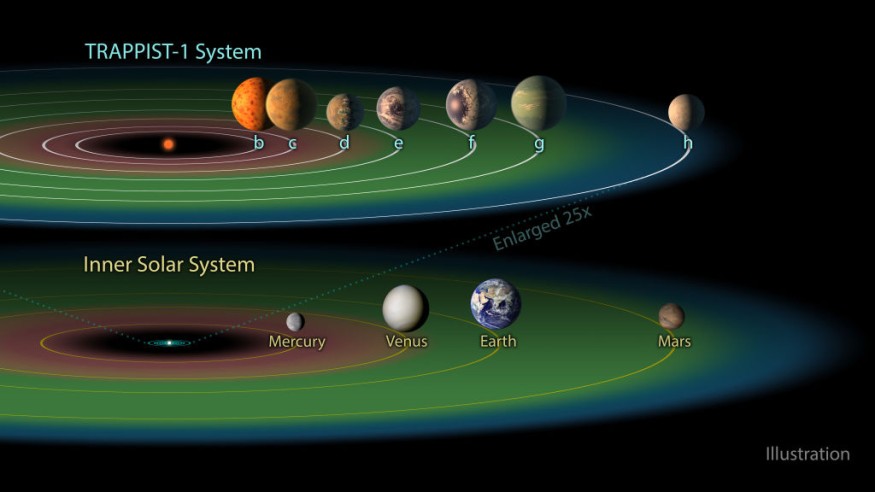Researchers said TRAPPIST-1 releases solar flares that might provide the planets enough energy to support the evolution of life. That implies there may be a greater chance of life than previously imagined on the exoplanets around our nearby star.
These water planets were long believed to be uncommon if they had existed at all. However, New Scientist said new information has prompted many astronomers to believe they could be very numerous, making them intriguing locations to look for extraterrestrial life. Now the search is on to locate one.
TRAPPIST-1 Exoplanets Might Be More Habitable
The distance between TRAPPIST-1, a red dwarf star, and our solar system is approximately 40.7 light years. The Goldilocks zone, which is the region of space surrounding a star where the temperatures permit liquid water to exist on the surface, is home to four of its seven planets.
TRAPPIST-1 has been a focus for the hunt for extraterrestrial life due to its relative closeness to Earth for comparison, the Milky Way galaxy is around 100,000 light-years away and its numerous Goldilocks planets.
"Cool red dwarf stars like TRAPPIST-1 are the most common type of stars (75 percent of stars in the Milky Way), so if we are looking for life on exoplanets around other stars, these types of stars are of high interest," Laura McKemmish, a quantum chemist and molecular physicist at the University of New South Wales, told Newsweek.
"In fact, our closest star Proxima Centauri is also a red dwarf and also has a planet Proxima Centauri b in the traditional habitable zone-i.e. liquid water," added McKemmish.
Red dwarf stars, however, are significantly more prone to stellar flares than hotter stars like our sun and are much more flammable.
These frequent and powerful stellar flares are expected to destroy the planet's habitability (for example, unstable atmospheric composition, radiation destroying life molecules once this gets through the atmosphere, etc.). As a result, the habitability of planets around red dwarfs is highly uncertain.

ALSO READ : Habitable, Earth-like Exoplanets Might Be Cold, Dry "Pale Yellow Dots" After All [Study]
About the Dispute of Red Dwarf Star
According to McKemmish, there is now a dispute in the scientific community regarding whether the heightened stellar weather on red dwarf stars prevents the existence of life on planets orbiting these stars.
In addition to potentially endangering exoplanet atmospheres and maybe sterilizing their surfaces, flares may also supply low-mass stars with the additional energy required to initiate and sustain primordial chemistry.
The beginning point (and perhaps the simplest way) to begin the search for extraterrestrial life is to hunt for biosignatures on exoplanets inside the conventional habitable zone of their star, but it is not the only approach.
If life were to be discovered on one of TRAPPIST-1's planets, it would take even the tiny, unmanned spacecraft New Horizons, which travels at 36,000 miles per hour, 80,000 years to reach our nearest star neighbors in the Centauri system, who are only four light years away. If life were to be found on one of TRAPPIST-1's planets, at a distance of 40 light years away.
The preprint report of the researchers is scheduled for publication in the journal Astronomy and Astrophysics.
Check out more news and information on Space in Science Times.












